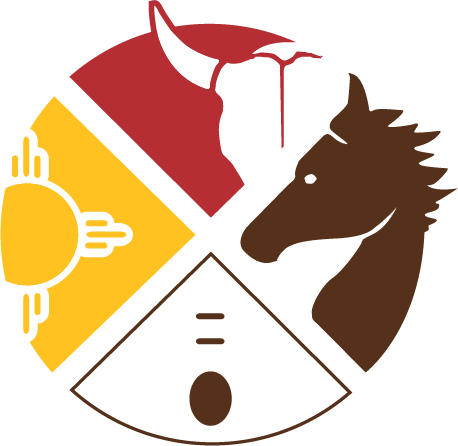The Need for Livable Homes
The Lakota word “tipi” is difficult to translate into English. In Lakota, words carry emotion. It is not necessarily a tent with poles, and it is more than just a place to lay your head. Tipi is a good, safe, happy place, where one connects with relatives and needs are met. When Maslow's hierarchy of needs is met, people can reach their highest potential. Living in a tipi ensures feelings like belonging, inclusion, and heart-felt pride. So one’s tipi could be anywhere, even in a house built from old truck tires!
A thriving, happy life is difficult when the physical elements of a home are inadequate. Protection from the cold or heat, access to potable water or modern restroom facilities, are not always available in many of the housing structures now in use across the reservation. Unaffordable expenses are required just to heat and cool.
The Housing Crisis on Pine Ridge
Pine Ridge Reservation is the poorest county in the United States.
97% of the population lives far below the U.S. federal poverty line with a median household income ranging between $2,600 and $3,500 per year.
There’s an estimated average of 17 people living in each family home, a home that may only have two to three rooms. Some Reservation families are forced to sleep on dirt floors.
42.4% of the population was identified as being younger than 20 years old in the 2010 U.S. Census. By comparison, the state of South Dakota average for this demographic is 27.8%.
Over 33% of homes have no electricity or basic water and sewage systems, forcing many to carry (often contaminated) water from local rivers daily for their personal needs.
At least 60% of homes on the Reservation need to be demolished and replaced due to infestation of potentially fatal black mold; however, there are no insurance or government programs to assist families in replacing their homes.
Weather is extreme on the Reservation. Severe winds are always a factor. Summer temperatures reach well over 110 degrees and winters bring bitter cold and can reach -50 degrees below zero or worse.
This is why we are building affordable, eco-centric, generational infrastructure.
Our Solution:
Affordable, safe, healthy, eco-centric homes holistically designed to improve living conditions and reduce waste while meeting all necessary building codes.
Affordable - We keep our costs low by using recycled and donated materials such as tires, bottle bricks, re-purposed lumber, papercrete, and more. This cost saving is then passed on to the Tiwahe receiving the home.
Healthy - Intelligent design using thermal mass and passive solar model to maximize the passive heating and cooling potential of each building to create a temperate environment with temps between 65-75°F year-round without the need for external heating or cooling equipment. Yes, even here on Pine Ridge in the dead of winter of the heat of summer.
Safe & Generational - Built with a rammed earth foundation and thermal mass wall which provides strength and protection from the harsh weather conditions like tornados to ensure the home remains for each Tiwahe’s future generations.
Eco-centric - Water catchment systems to more effectively manage the drinking water, grey water, and black water to maximize the use of clean water and reduce costs to families. This, along with having little to no need for any external heating or cooling equipment reduces waste and eliminates the need for any fossil fuels. Mni Wiconi.
OLCERI is now ready to provide the essential infrastructure needed to train local crews to build highly resilient earth-bermed homes complete with underground food-growing greenhouses, food-storing root cellars, on-site waste recycling, and off-grid power systems. Sustainable technology can reduce annual heating and cooling costs to zero.
Our Plan To Implement
In order to showcase these homes, minimize our costs, and maximize our capacity to scale our offering, we are building 5 demonstration sites on our home site in Slim Butte. These will be:
Studio with a total of 600 sq ft living space
1-bedroom home with a total of 900 sq ft living space
2-bedroom home with a total of 1200 sq ft living space
3-bedroom home with a total of 1500 sq ft living space
4-bedroom, large home with a total of 1800 sq ft living space
5-bedroom, Thiyospaye home with a total of 2100 sq ft living space
After completing these demo sites, we will provide community tours and education to empower self-identifying individuals who would like a home to learn about the details of the home, how it will improve their lifestyles and health, and how they can sign up to have one built on their land.




